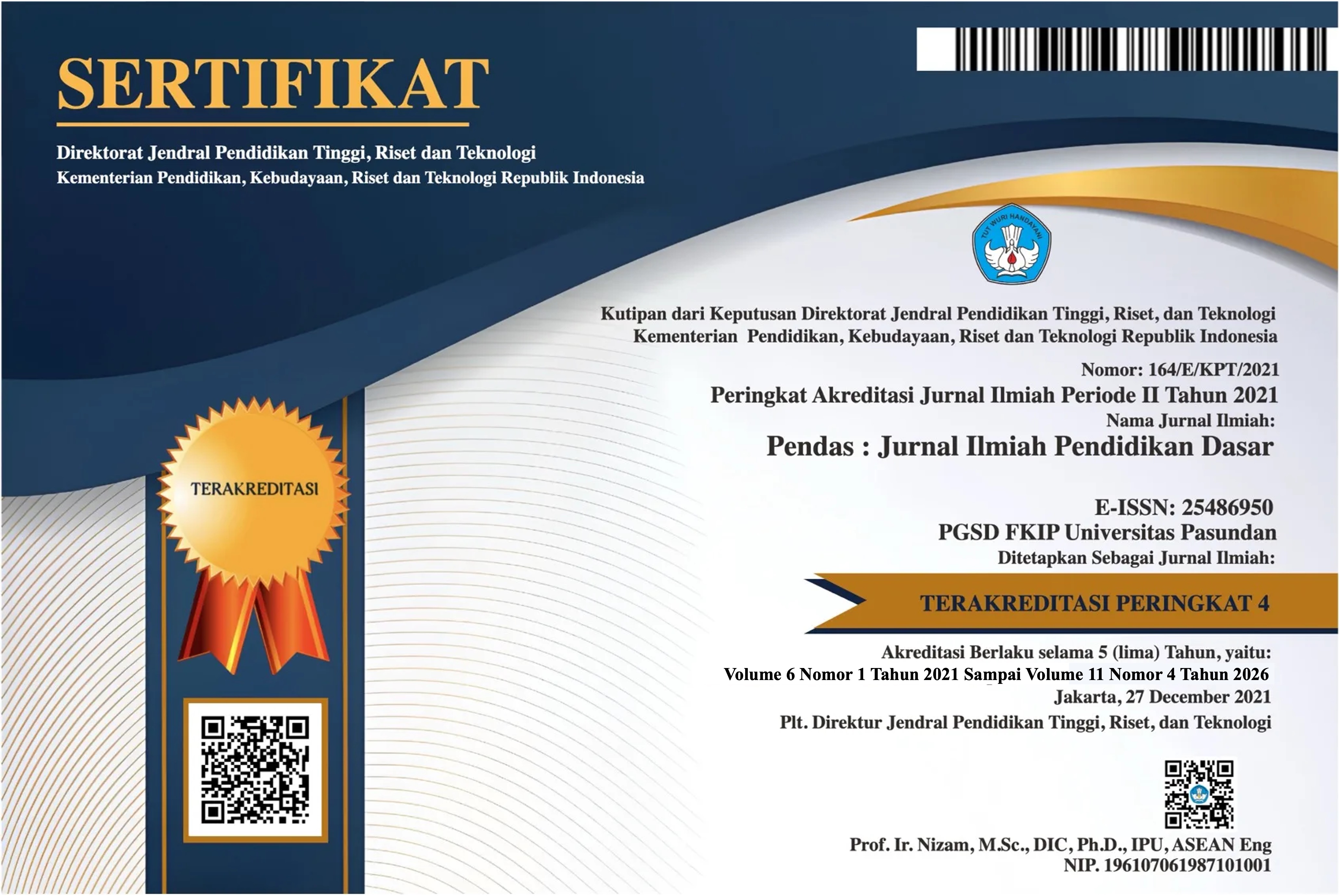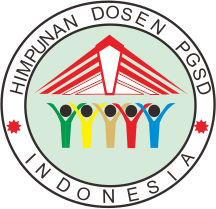KEPEMIMPINAN DIGITAL DALAM PENDIDIKAN BUDAYA INSTITUSI SENI BUDAYA
DOI:
https://doi.org/10.23969/jp.v10i04.35932Keywords:
Digital Leadership, Art and Cultural Education, Educational Management, Cultural Values, Digital TransformationAbstract
The digital transformation era presents both challenges and opportunities for art and cultural education institutions in Indonesia. Leadership in this context requires not only administrative and managerial capabilities but also the ability to integrate digital innovation with local cultural values. This study aims to analyze the model of digital leadership in cultural education institutions and to identify effective strategies for maintaining the balance between technological innovation and cultural preservation. This research employed a qualitative approach using a multiple case study design across three Indonesian art and cultural institutions: the Indonesian Institute of the Arts (ISI) Yogyakarta, the Jakarta Institute of the Arts (IKJ), and the Nusantara Academy of Arts and Culture (AKSBN). Data were collected through in-depth interviews, participatory observations, and institutional document analysis. Thematic analysis was conducted using the Miles, Huberman, and Saldaña framework. The findings reveal five key dimensions of culturally rooted digital leadership: (1) digital vision grounded in local cultural values; (2) pedagogical innovation in art education through technology; (3) intercultural collaboration and global networking; (4) strengthening institutional digital identity; and (5) ethical and spiritual awareness in digital transformation processes. The proposed Cultural–Digital Leadership Model emphasizes that the success of digital transformation in art institutions is not measured by the level of technology adoption, but by how effectively technology reinforces cultural identity, ethics, and national character. This study contributes theoretically to the development of a culturally grounded educational leadership model and practically provides guidance for policymakers and institutional leaders in designing sustainable and culturally conscious digital transformation strategies for art and cultural education.
Downloads
References
Bazeley, P., & Jackson, K. (2019). Qualitative data analysis with NVivo (3rd ed.). SAGE.
Bowen, G. A. (2009). Document analysis as a qualitative research method. Qualitative Research Journal, 9(2), 27–40.
Creswell, J. W., & Poth, C. N. (2023). Qualitative inquiry & research design: Choosing among five approaches (5th ed.). SAGE.
Denzin, N. K., & Lincoln, Y. S. (2021). The SAGE handbook of qualitative research (6th ed.). SAGE.
Yin, R. K. (2018). Case study research and applications (6th ed.). SAGE.
Miles, M. B., Huberman, A. M., &
Saldaña, J. (2020). Qualitative data analysis: A methods sourcebook (4th ed.). SAGE.
Karakose, T. (2024). A review of digital leadership in educational contexts: A bibliometric mapping. Educational Management Journal, 36(2), 133–152.
Sandberg, B. (2024). Art-based leadership development in higher education. Arts and Humanities in Higher Education, 23(1), 15–32.
Li, J. (2024). Digital transformation technologies in museum exhibitions: A systematic review. Journal of Cultural Informatics, 12(3), 45–62.
Xu, C. (2023). Museum-digital integration in education: Empowering learners through technology. Cultural Education Review, 11(4), 98–113.
Shalgimbekov, A. (2025). Virtual museum learning: Evaluating effectiveness and engagement. International Journal of Educational Technology, 19(1), 1–14.
Odgers, D. (2024). Digital renaissance in the arts & culture industry. Leadership in Culture Journal, 4(1), 1–12.
NEMO. (2022). Digital learning and education in museums: Insights and practices. Network of European Museum Organisations.
Lincoln, Y. S., & Guba, E. G. (2020). Naturalistic inquiry: Revisiting qualitative rigor. Qualitative Research Review, 18(2), 120–138.
Spradley, J. P. (2016). Participant observation. Waveland Press.
Karakose, T. (2024). A review of the conceptual structure and evolution of digital leadership in education. MDPI.
Yap, J. Q. H. (2024). The impact of digitalisation in museums on visitor experience and education. Taylor & Francis Online.
NEMO (Network of European Museum
Organisations). (2022). Digital learning and education in museums: Innovations. NEMO.
Li, J. (2024). Systematic review of digital transformation technologies in museum exhibitions. ScienceDirect.
Shalgimbekov, A. (2025). Effectiveness of virtual museums in enhancing learning. jecs.pl.
Sandberg, B. (2024). Outcomes of art-based leadership development. PMC.
Witthöft, J. (2024). Leading digital innovation in schools: The role of open innovation. Taylor & Francis Online.
Research on emerging technologies in digital museums (literature review).
Xu, C. (2023). Empowering learners via museum-digital integration. Berghahn Journals.
Chen, X. (2025). Influence of digital leadership on the utilization of online museum education. Atlantis Press.
Odgers Insights. (2024). Digital renaissance of the arts & culture industry. Odgers.
Clore Leadership. (2024). Cultural leadership in a changing world of work. Clore Leadership.
Karakose, T. (2024–2025). Comprehensive bibliometric & mapping reports. MDPI.
Appadurai, A. (1996). Modernity at large: Cultural dimensions of globalization. University of Minnesota Press.
Avolio, B. J., Sosik, J. J., & Kahai, S. S. (2019). Digital leadership: Leading transformation in the age of AI. Leadership Quarterly, 30(1), 1–14.
Banks, M. (2016). Creative justice: Cultural industries, work, and inequality. Rowman & Littlefield.
Bass, B. M., & Riggio, R. E. (2006). Transformational leadership. Psychology Press.
Bennett, D. (2020). Arts leadership and cultural management in the digital age. Routledge.
Brown, J. S., & Duguid, P. (2000). The social life of information. Harvard Business Review Press.
Dewey, J. (2005). Art as experience. Penguin.
Eisner, E. W. (2002). The arts and the creation of mind. Yale University Press.
Fullan, M. (2014). The principal: Three keys to maximizing impact. Jossey-Bass.
Hargreaves, A., & Fink, D. (2015). Sustainable leadership. Wiley.
Heifetz, R. A., & Linsky, M. (2017). Leadership on the line: Staying alive through the dangers of change. Harvard Business Review Press.
House, R. J., Hanges, P. J., Javidan, M., Dorfman, P. W., & Gupta, V. (2004). Culture, leadership, and organizations: The GLOBE study of 62 societies. SAGE Publications.
Kotter, J. P. (2018). Accelerate: Building strategic agility for a faster-moving world. Harvard Business Review Press.
Marzuki, A. (2023). Cultural leadership in digital art education. Jurnal Manajemen Pendidikan dan Budaya, 15(2), 45–60.
McLuhan, M. (1994). Understanding media: The extensions of man. MIT Press.
Northouse, P. G. (2021). Leadership: Theory and practice (9th ed.). SAGE Publications.
Nugroho, D., & Wibowo, A. (2022). Digital transformation in Indonesian art education institutions. Indonesian Journal of Educational Management, 9(3), 100–115.
Schein, E. H. (2017). Organizational culture and leadership (5th ed.). Wiley.
Schein, E. H., & Schein, P. (2018). Humble leadership: The power of relationships, openness, and trust. Berrett-Koehler.
Sutanto, H. (2021). Digitalisasi pendidikan seni di era revolusi industri 4.0. Jurnal Pendidikan dan Seni, 12(2), 45–58.
Tilaar, H. A. R. (2018). Manajemen pendidikan nasional berbasis budaya bangsa. Rineka Cipta.
Westerman, G., Bonnet, D., & McAfee, A. (2014). Leading digital: Turning technology into business transformation. Harvard Business Review Press.
Yukl, G. (2020). Leadership in organizations (9th ed.). Pearson.
Downloads
Published
Issue
Section
License
Copyright (c) 2025 Pendas : Jurnal Ilmiah Pendidikan Dasar

This work is licensed under a Creative Commons Attribution 4.0 International License.


















